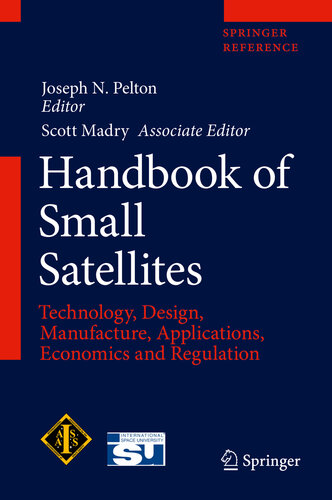Handbook of Small Satellites
Technology, Design, Manufacture, Applications, Economics and Regulation
In the past decade, the field of small satellites has expanded the space industry in a powerful way. Hundreds, indeed thousands, of these innovative and highly cost-efficient satellites are now being launched from Earth to establish low-cost space systems. These smallsats are engaged in experiments and prototype testing, communications services, data relay, internet access, remote sensing, defense and security related services, and more. Some of these systems are quite small and are simple student experiments, while others in commercial constellations are employing state-of-the-art technologies to deliver fast and accurate services.https://covers.springernature.com/boo... https://www.springer.com/9783030363086 http://www.springer.com/
لغو
ذخیره و ثبت ترجمه


























دیدگاه کاربران